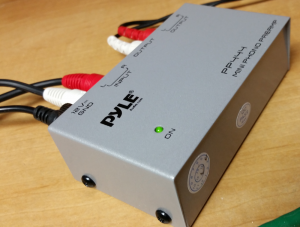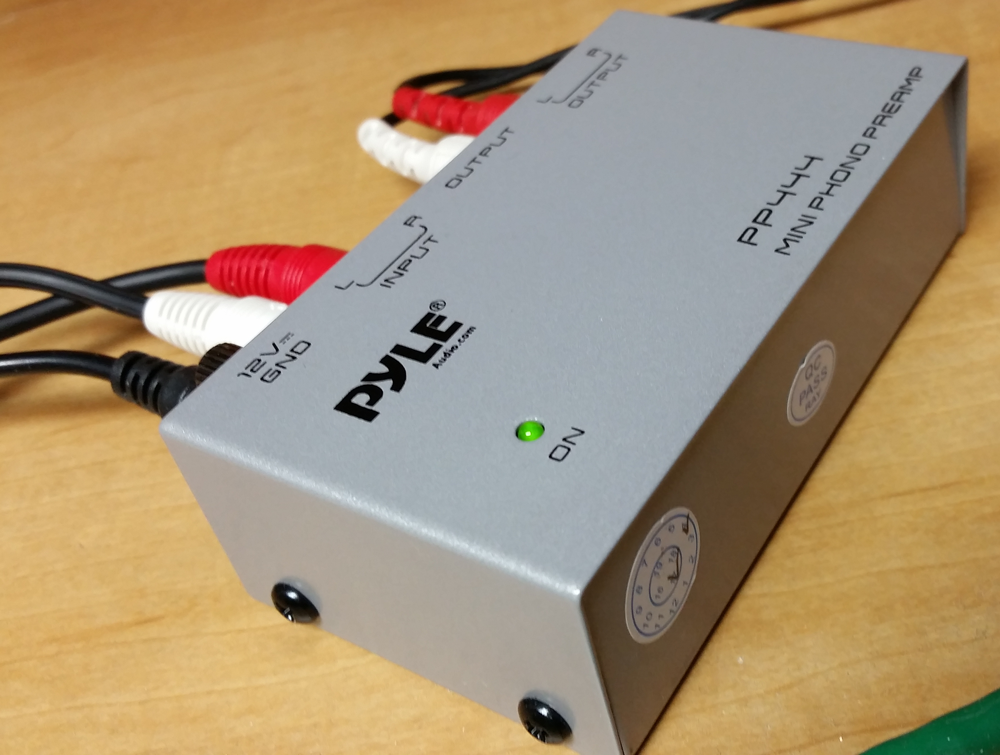
I have a bunch of 78 RPM records that I’ve wanted to digitize for some time. Unfortunately, my turntable does not play 78s, only 45 RPM and 33 1/3 RPM records. There was a time when nobody wanted to play 78s, so the turntables did not have the capability. On top of that, the technical specifications for a 78 RPM record are radically different from those of a 33 1/2 vinyl disc, so the stylus and setup are not the same.
Back in the day, some turntables had “flip-over” cartridges, so if you had 45s, 33 1/3 records, and 78s you could simply flip the cartridge then you were ready to play away. Of course, you got into issues of tone arm weight settings and so on, but it worked. I seem to recall that BSR was one of the companies that made such turntables.
Anyway, here in the “Tech Basement” I had recently had occasion to purchase a new turntable and about 1/3 list price (closeouts are wonderful), so I was able to get to work on digitizing the old 78s. The new turntable even has RCA line-out connections, so plugging it into the computer was a breeze. But, that’s the point of this post. Connections can be traumatic.
You see, turntables, except for these new “special” ones, do not use the same signal out that other audio equipment use. Most audio gear, such as tuners, amplifies, and so on, use a signal called “line level” and you can see connections labeled “line out” and “line in”. Details about line level are at https://en.wikipedia.org/wiki/Line_level, if you like that sort of stuff.
Computers, at least many desk top machines, have line in or line out connections. Because line level is a common standard, you can connect all sorts of equipment together. Of course, now days we have optical digital, USB, and other standards, but good old line level was fine when we all had speakers that were three feet tall.
The problem now days is that if you want to digitize your records you have to connect a turntable to your computer. If you have a new turntable with USB connections you really shouldn’t have any problems. But, if you have a “traditional” turntable you have to connect the machine’s phono out connections to your computer’s line in! Naturally, because nothing is simple, the phono out signal is different from the line level signal.
This is where a phono preamp comes in. Also called a “turntable preamplifier” (or something similar), the phono preamp boosts and converts the phonograph signal from a turntable to line level so that it works with a device, such as a computer, that does not have “phono in” connections. As it turns out, many new audio system amps do not have phono inputs, either. What WERE they thinking of?
The photograph above and to the right shows the phono preamp that I am using. It is an inexpensive model, most are not budget-busters, and it is connected between my turntable and computer. It has RCA in and out jacks, so hookup takes seconds. This one had a wall power adapter, but I have seen some with battery power capabilities, so I guess you can be a DJ on the road.
If you put 2 and 2 together, you may have figured out that I am not using this preamp on the turntable for the 78s. Right! I am using this to digitize vinyl 33 1/3 RPM discs. The new turntable I got on sale already has RCA line level out connections, so it simply plugs into a computer, no muss or fuss. If you are following this closely, you may have a suspicion that I am surrounded by cables right now. Well, it isn’t that bad, but, frankly, one has to be careful.
I will fill you in on recording and digitizing details in a subsequent post. Stay tuned. Oh, did you know that you can subscribe to an RSS feed so you always know what there’s a new post here? Click the little RSS icon in the top right corner of the screen.
